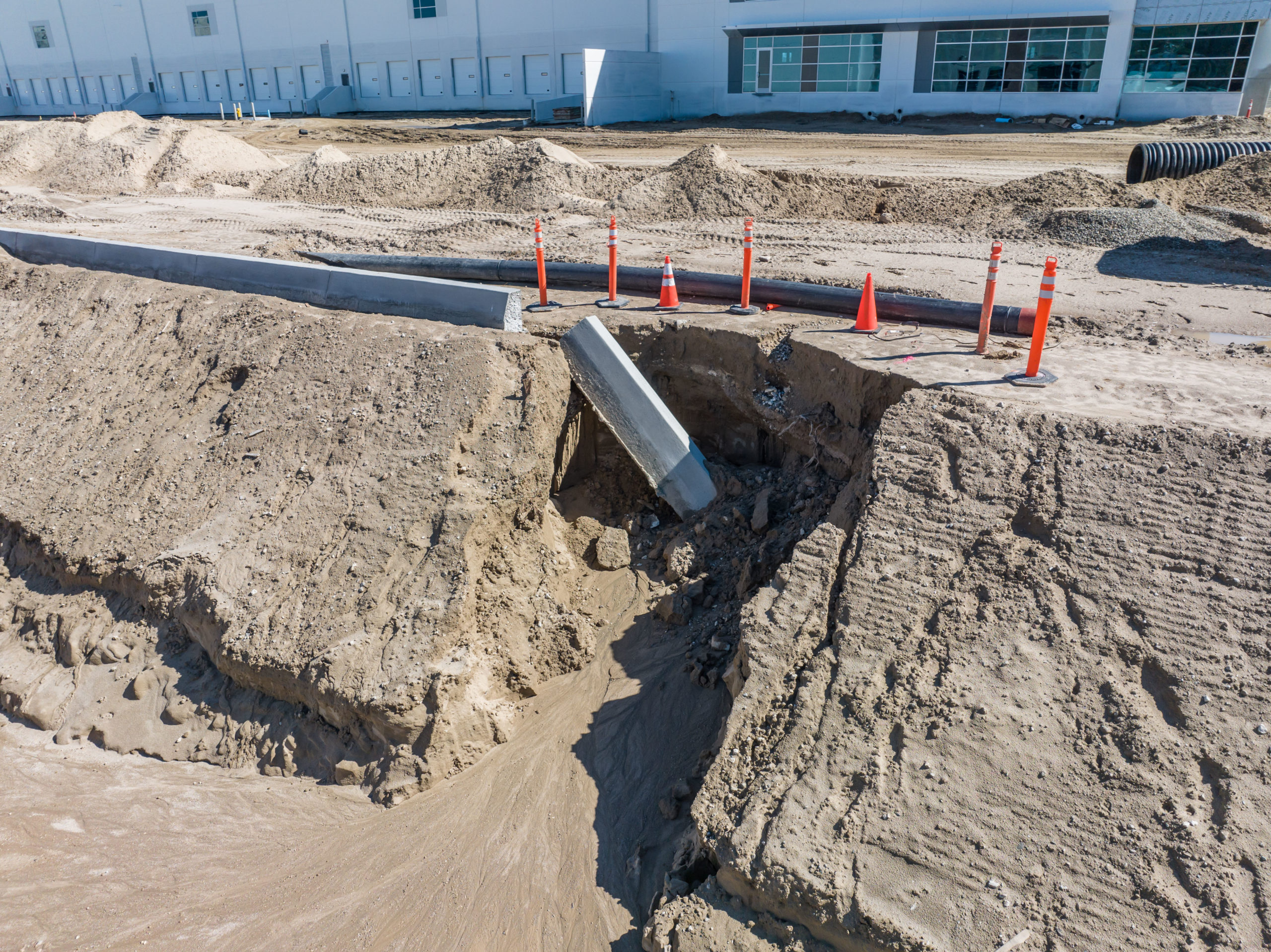The Challenge:
KPRS, a commercial construction company, faced significant challenges at the Agua Mansa construction site due to weeks of heavy rainfall. The distribution warehouse complex suffered extensive damage, including the concrete parking area, the roofs of several buildings, and construction delays. KPRS needed to document the damage accurately and efficiently to file an insurance claim and receive adequate compensation for the losses incurred.
The Solution:
KPRS recognized the potential of using drone technology to capture detailed and high-resolution images of the Agua Mansa site. They engaged the services of Southbay Drone Services with expertise in construction site inspections. The pilot conducted a comprehensive aerial survey of the site, capturing clear and precise images of the entire property, including the parking area, roofs, and ongoing construction work.
By using drones, KPRS gained the following benefits:
- Accurate Documentation: The drone’s aerial perspective allowed for comprehensive documentation of the entire Agua Mansa site. The high-resolution images captured minute details that would have been challenging to capture from the ground. This accurate documentation provided indisputable evidence of the damage caused by the rain.
- Efficient Data Collection: Drones enable rapid data collection, saving time and resources compared to traditional inspection methods. Instead of relying on manual inspections or climbing on roofs for visual assessments, the drone pilot quickly captured detailed images, covering a vast area in a fraction of the time.
- Enhanced Safety: Traditional methods of inspecting roofs and large areas of the site can be hazardous. By deploying drones, KPRS minimized the need for personnel to physically access dangerous or hard-to-reach areas, ensuring the safety of their team.
- Before-and-After Comparisons: By capturing both pre-damage and post-damage images, KPRS had solid evidence to present during the insurance claim process. These comparisons highlighted the extent of the damage caused by the rain and clearly demonstrated the repairs and remediation required.
Benefits:
KPRS reaped numerous benefits by utilizing drone photos in their insurance claim process:
- Cost Savings: The detailed documentation provided by the drone photos allowed KPRS to accurately quantify the damage caused by the rain. This enabled them to negotiate a fair insurance claim settlement of $400,000, ensuring they were adequately compensated for the losses incurred during construction.
- Improved Efficiency: The use of drones expedited the data collection process, saving valuable time for both KPRS and the insurance company. This streamlined approach allowed for a quicker resolution of the claim, reducing administrative burdens and minimizing project delays.
- Enhanced Accuracy: The high-resolution imagery captured by the drones ensured precise and detailed documentation of the damage. This accuracy eliminated any potential disputes or disagreements with the insurance company, enabling a smoother claims process.
- Future Risk Mitigation: KPRS can utilize drone photos as a valuable resource for future risk mitigation efforts. By comparing the pre-damage and post-damage images, they can identify areas prone to vulnerability and take proactive measures to prevent similar damage in the future.
Conclusion:
KPRS, a commercial construction company, successfully leveraged drone technology to save $400,000 on an insurance claim related to rain-induced damage at the Agua Mansa construction site. By employing Southbay Drone Services to capture high-resolution images of the site, KPRS achieved accurate documentation, enhanced efficiency, and substantial cost savings. The utilization of drone photos not only expedited the claims process but also provided valuable evidence for future risk mitigation. This case study demonstrates the immense value of drone technology in the construction industry, particularly in documenting and resolving insurance claims efficiently and effectively.

